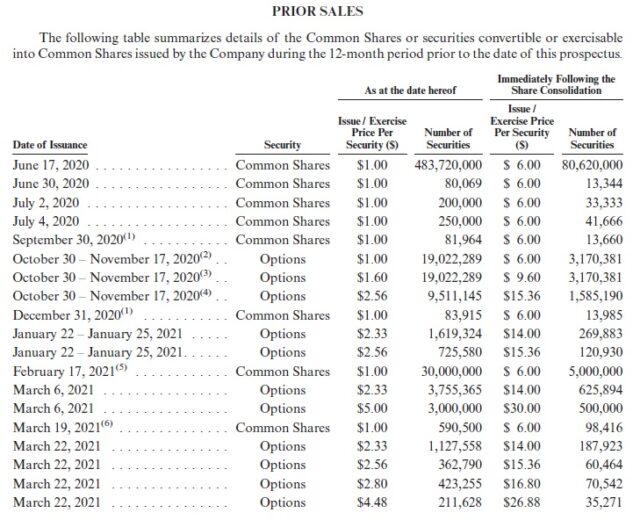Here is a prototypical example. MDA (TSX: MDA) has gone public yet again. Most people here probably know the financial history of the firm – purchased by Maxar (TSX: MAXR), and then taken private so that Maxar could de-leverage, and then now it is taken public again with a price of CAD$14/share.
The company had its founding in the Greater Vancouver area, and continues today to perform engineering services in the space satellite domain, among other things.
The offensive thing about the public offering is page 65 of the 275 page prospectus:
The overlords of MDA knew perfectly well that they were probably going to go public again, and in the process granted themselves a ton of cheaply issued stock (noting that the right-hand table contains the applicable prices because of the 6:1 reverse split they performed before the IPO). They were looking to raising more money (at a higher share price) but had to taper it back to CAD$14 due to the tepid reception – probably partly due to this table. The other is the financial status of the company (it isn’t making that much money).
At the very minimum, I’d wait until the 180 day lockup period is over before even considering it, but knowing that space is a hype sector, I’m sure it’ll take off soon before then. Comparisons to SpaceX, however, is incredibly misguided – SpaceX has the reusable rocket technology which contains a massive competitive advantage on launch costs, while satellite construction and manufacturing is a much more competitive (and hence lower margin) industry, albeit played by a much fewer number of participants.
